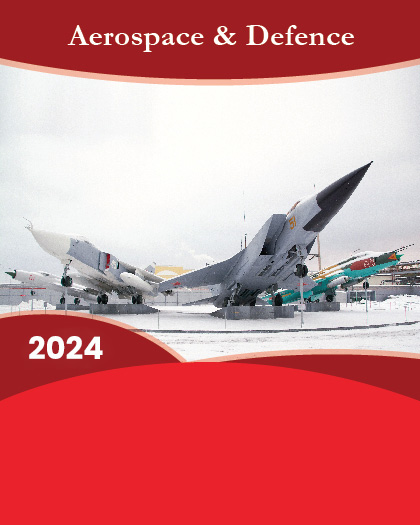Table of Contents
Chapter 1. Global Microsatellite and Nanosatellite Market Executive Summary
1.1. Global Microsatellite and Nanosatellite Market Size & Forecast (2022-2032)
1.2. Regional Summary
1.3. Segmental Summary
1.3.1. By End User
1.3.2. By Application
1.3.3. By Orbit Type
1.4. Key Trends
1.5. Recession Impact
1.6. Analyst Recommendation & Conclusion
Chapter 2. Global Microsatellite and Nanosatellite Market Definition and Research Assumptions
2.1. Research Objective
2.2. Market Definition
2.3. Research Assumptions
2.3.1. Inclusion & Exclusion
2.3.2. Limitations
2.3.3. Supply Side Analysis
2.3.3.1. Availability
2.3.3.2. Infrastructure
2.3.3.3. Regulatory Environment
2.3.3.4. Market Competition
2.3.3.5. Economic Viability (Consumer's Perspective)
2.3.4. Demand Side Analysis
2.3.4.1. Regulatory frameworks
2.3.4.2. Technological Advancements
2.3.4.3. Environmental Considerations
2.3.4.4. Consumer Awareness & Acceptance
2.4. Estimation Methodology
2.5. Years Considered for the Study
2.6. Currency Conversion Rates
Chapter 3. Global Microsatellite and Nanosatellite Market Dynamics
3.1. Market Drivers
3.1.1. Small size and weight compared to conventional satellites
3.1.2. Rise in manufacturing and launch of CubeSats
3.2. Market Challenges
3.2.1. Limitations regarding payload accommodation
3.2.2. Stringent government regulations
3.3. Market Opportunities
3.3.1. Increasing demand from the commercial sector
3.3.2. Rising demand for satellite data
Chapter 4. Global Microsatellite and Nanosatellite Market Industry Analysis
4.1. Porter's 5 Force Model
4.1.1. Bargaining Power of Suppliers
4.1.2. Bargaining Power of Buyers
4.1.3. Threat of New Entrants
4.1.4. Threat of Substitutes
4.1.5. Competitive Rivalry
4.1.6. Futuristic Approach to Porter's 5 Force Model
4.1.7. Porter's 5 Force Impact Analysis
4.2. PESTEL Analysis
4.2.1. Political
4.2.2. Economical
4.2.3. Social
4.2.4. Technological
4.2.5. Environmental
4.2.6. Legal
4.3. Top investment opportunity
4.4. Top winning strategies
4.5. Disruptive Trends
4.6. Industry Expert Perspective
4.7. Analyst Recommendation & Conclusion
Chapter 5. Global Microsatellite and Nanosatellite Market Size & Forecasts by End User 2022-2032
5.1. Segment Dashboard
5.2. Global Microsatellite and Nanosatellite Market: End User Revenue Trend Analysis, 2022 & 2032 (USD Billion)
5.2.1. Civil
5.2.2. Government
5.2.3. Commercial
5.2.4. Military
Chapter 6. Global Microsatellite and Nanosatellite Market Size & Forecasts by Application 2022-2032
6.1. Segment Dashboard
6.2. Global Microsatellite and Nanosatellite Market: Application Revenue Trend Analysis, 2022 & 2032 (USD Billion)
6.2.1. Communication
6.2.2. Earth Observation
6.2.3. Space Science
6.2.4. Technology Demonstration
6.2.5. Technology Development
Chapter 7. Global Microsatellite and Nanosatellite Market Size & Forecasts by Orbit Type 2022-2032
7.1. Segment Dashboard
7.2. Global Microsatellite and Nanosatellite Market: Orbit Type Revenue Trend Analysis, 2022 & 2032 (USD Billion)
7.2.1. Non-polar Inclined
7.2.2. Polar
7.2.3. Sun-synchronous
Chapter 8. Competitive Intelligence
8.1. Key Company SWOT Analysis
8.2. Top Market Strategies
8.3. Company Profiles
8.3.1. AAC Clyde Space AB
8.3.1.1. Key Information
8.3.1.2. Overview
8.3.1.3. Financial (Subject to Data Availability)
8.3.1.4. Product Summary
8.3.1.5. Market Strategies
8.3.2. Lockheed Martin Corporation
8.3.3. L3Harris Technologies, Inc.
8.3.4. Swarm Technologies, Inc.
8.3.5. Sierra Nevada Corporation
8.3.6. Tyvak Nano-Satellite Systems, Inc.
8.3.7. Planet Labs Inc.
8.3.8. GomSpace
8.3.9. Astro Digital
8.3.10. Surrey Satellite Technology Ltd.
8.3.11. Dauria Aerospace
8.3.12. Spire Global, Inc.
8.3.13. SpaceQuest Ltd.
8.3.14. The Boeing Company
8.3.15. Vector Launch, Inc.
Chapter 9. Research Process
9.1. Research Process
9.1.1. Data Mining
9.1.2. Analysis
9.1.3. Market Estimation
9.1.4. Validation
9.1.5. Publishing
9.2. Research Attributes























